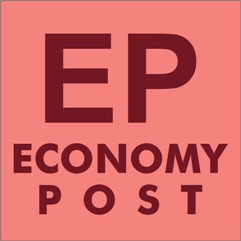Virendra Singh Rawat
A research by the Indian Institute of Management (IIM), Lucknow has underscored the importance of digitising India’s farming and agricultural sectors and its potential to revolutionise the sector.
By examining four major Agtech platforms, the study identifies and discusses the impact of these platforms and how they enhance Indian agriculture.
Agriculture, once perceived as among the least digitalised sectors, is experiencing transformation due to the introduction of digital ecosystems and platforms.
Agtech promote digital literacy among farmers, provide them with data-driven insights, and bridge the digital gap in agriculture.
This study is the first to outline the creation and leverage of such platforms by agribusinesses, government agencies or cooperatives.
The research conducted by Prof Sanjeev Kapoor from the Centre for Food and Agribusiness Management, IIM Lucknow, and Prof Neeraj Singh from the Marketing and Strategy Area, IIM Rohtak, has been published in the journal, Technology Analysis & Strategic Management.
The study focuses on four of India’s largest Agtech platforms viz. Dehaat, Samunnati Agrielevate, IFFCO Bazar, and KRIBHCO-CSC-eGov.
Expert consultations and data analysis from several sources were conducted to examine their impact on network effects and how they enhance the platforms’ value proposition, particularly through matching, transactional, discovery, and evaluation.
Kapoor, the lead author of the study, emphasised the significance of this research stating, “This study is the first to discuss partners for Agtech platforms. It investigates partners in both privately and collaboratively marketed Agtech platforms using a unique case research methodology.”
“This study is relevant to the development of digital agribusiness strategies because of the rise of Open Network for Digital Commerce (ONDC) and other democratic digital markets in the agricultural space. Practitioners and policymakers can utilise the emerging Agtech Value Proposition Canvas (AVPC) framework as an exercise to build and establish platforms for rural markets,” he added.
The analysis identified essential complementary cores for an Agtech platform for emerging markets. These include third-party financial institutions for providing microcredit and facilitating transactions, as well as warehouse and logistic partners to enhance efficiency.
Social media modules enable peer-to-peer feedback and information sharing, promoting transparency and increasing platform value by encouraging direct user interaction.
Discussing the advancement of agriculture through these platforms, Kapoor adds, “The IFFCO Bazar and KRIBHCO CSC-eGov are exemplary cases of platform cooperatives with shared ownership and democratic governance involving many members.
These cooperatives empower farmers through collective decision-making, prioritising community interests. They foster local initiatives like training rural youth or engaging local village-level entrepreneurs, ensuring community-driven benefits with profits.”
On the other hand, Dehaat and Agrielevate, as privately held companies prioritizing profit, adopt firm-led control and ownership governance, emphasising commercial performance and profit growth.
Both approaches have advantages and disadvantages, but the cooperative method stands out for its inclusive, community-centered governance, aligning platform objectives with the interests of agricultural stakeholders and promoting a more engaged and community-driven ecosystem.
Meanwhile, Singh emphasises that the Agtech platform domain lacks comprehensive understanding in academic and management spheres. The study elucidates the structural and functional aspects of digital platforms for rural markets, offering a practical framework for agribusiness managers to identify relevant partner organizations and anticipate the impact of these actors on network effects and overall value proposition beforehand.
A successful Agtech platform boasts a clearly defined value proposition, and partnering firms that align with it tend to fare better. The framework also suggests strategies for agricultural platforms to expand by enhancing the net-positive network effect.
These findings offer insights for researchers, providing a deeper understanding of the types of ‘complementors’ associated with agricultural platforms. The research can serve as a starting point for further exploration of issues such as low rates of farmer acceptance of these platforms.
Moreover, by examining agricultural platform configuration and design aspects from stakeholders’ viewpoints, this research provides insight into Agtech platform dynamics.

